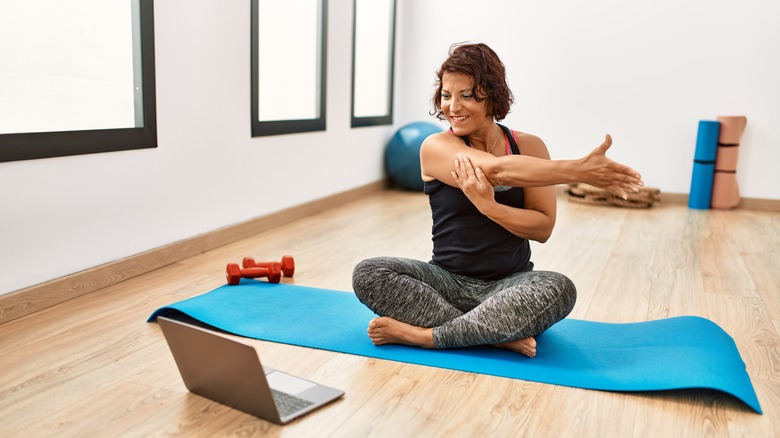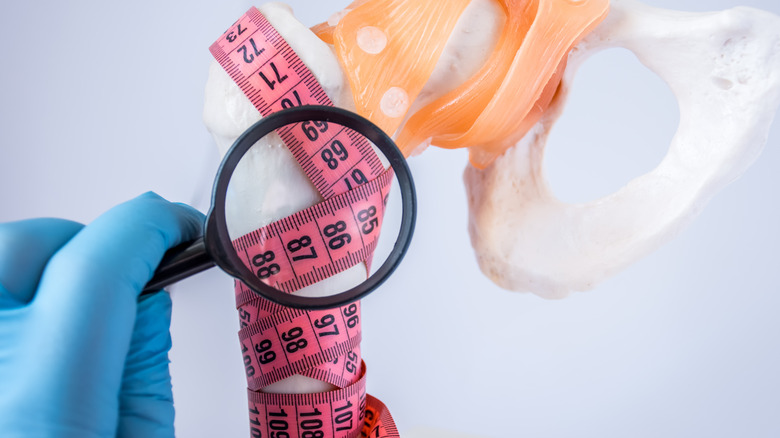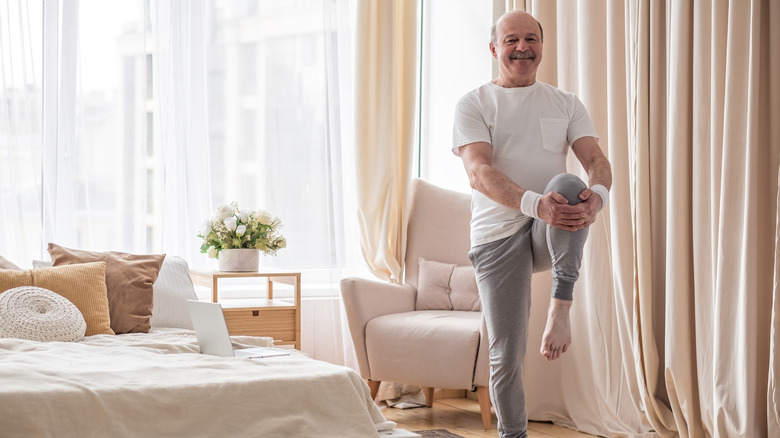Why You Should Add Pilates To Your Workout Routine If You Have Osteoporosis
Living with osteoporosis can be challenging, no matter your age or fitness level. This disorder gradually weakens your bones, leaving them vulnerable to fractures. As the disease progresses, you may experience low back pain, postural changes, and height loss.
The Cleveland Clinic reports that osteoporosis affects about 200 million men and women worldwide, including 54 million people in the U.S. Women are more likely to develop the disease because of the hormonal changes associated with menopause. Genetics and other factors, such as an underactive thyroid or blood disorders, can further increase your risk of osteoporosis.
Physical activity can help prevent and treat this disease, but not all exercises are safe. Running, jumping, and high-impact workouts put stress on the joints, which may lead to injury. You should also avoid sit-ups, toe touches, and certain yoga poses, especially those that require bending or twisting your back. Golf, tennis, skiing, and contact sports are not safer either, explains the organization CreakyJoints. Pilates is safe as long as you don't force your spine into awkward positions. This form of exercise could actually strengthen your bones and relieve pain, allowing you to remain active.
Pilates may increase bone density and strength
Thirty percent of people over 50 have low bone density, according to the Cleveland Clinic. This aspect alone can contribute to osteoporosis in the long run. The risk is even higher for individuals with Celiac disease or other conditions that affect the body's ability to absorb calcium and vitamin D. A sedentary lifestyle, cigarette smoking, fad diets, and alcohol use can lead to osteoporosis, too.
Given these risks, it makes sense to do whatever it takes to keep your bones strong. For starters, consider adding Pilates to your fitness routine. This type of exercise is gentle on the joints and suitable for all ages, leading to increased strength and flexibility, says Prevention. What's more, Pilates can increase bone density and boost physical performance while reducing pain, according to 2015 research published in the Journal of Back and Musculoskeletal Rehabilitation.
The Royal Osteoporosis Society recommends practicing Pilates to maintain muscle and bone strength. To stay safe, opt for gentle movements that allow you to bend your spine in a controlled manner. Some exercises, such as the superman, the seated forward fold, and forward toe touches, can stress your spine, so it's best to avoid them.
It may also help improve your balance and prevent falls
Having poor balance can significantly increase the risk of hip fractures, according to Eastern Connecticut Rehabilitation Centers. Regular exercise, including Pilates, won't necessarily prevent fractures, but it can improve your balance and prevent falls. Standing exercises, such as lunges, wall roll-downs, crab walks, calf raises, and skating squats, are particularly effective, notes McMaster University.
The Pilates training method builds core strength, which in turn helps stabilize your trunk. At the same time, it improves your posture and increases pelvic stability, making it easier to maintain your balance. As an added benefit, it may help prevent or ease back pain and boost physical endurance, reports a 2020 study featured in the Proteus Journal. What's more, Pilates can reduce the fear of falling and improve muscle strength, suggests a recent review presented in the journal Physiotherapy.
Personal trainer Rebekah Rotstein recommends combining Pilates with functional and resistance training. Ideally, choose exercises that strengthen the back, hips, and wrists, she said in an interview with West LA Pilates. For example, you could do kickbacks and one-leg circles with resistance bands, as well as pelvic tilts and side, front, or back splits on the reformer.
Start with basic movements and add new exercises to the mix as you progress. Remember to keep your workouts varied and fill up on calcium-rich foods. Also, note that most exercises can be modified based on your fitness level and individual needs.



